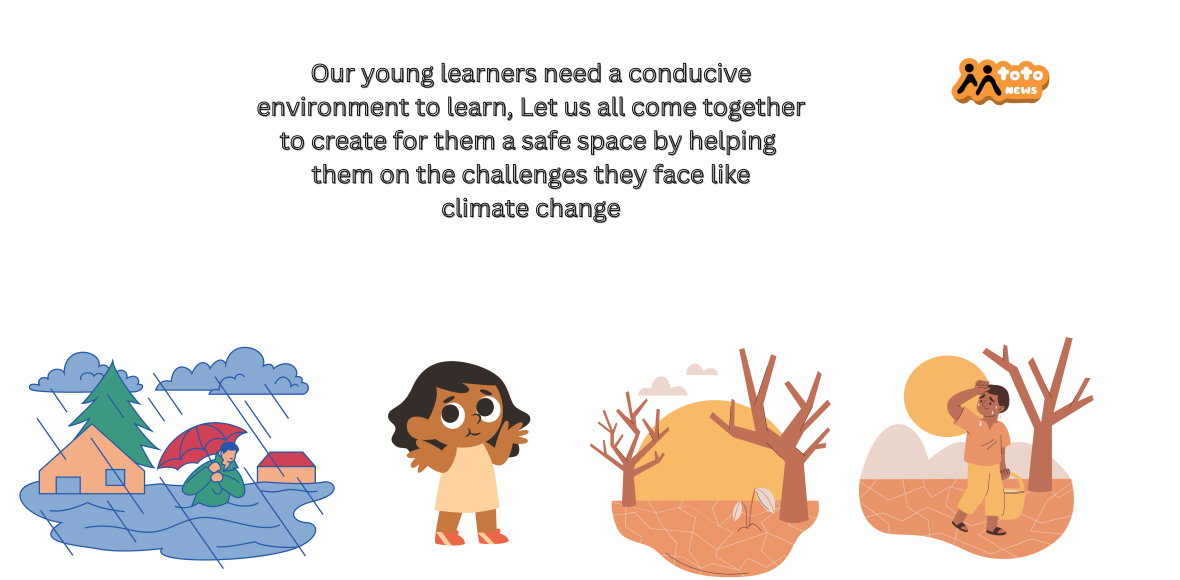
By Isaac Omollo
In Kenya, climate change is creating serious challenges for students and their education. Extreme weather events, like floods and droughts, are disrupting schools, making it harder for children to learn. These challenges affect different regions in various ways, making it essential for the government to address the impact of climate change on education.
Floods can destroy school buildings, make roads unsafe, and lead to illness, preventing students from attending school. During long droughts, families may struggle to survive, forcing children to drop out. Boys often leave school to help with livestock, while girls take on household chores as their mothers travel farther for water. Even when children attend school, hunger from disrupted school feeding programs makes it difficult for them to focus.
According to the Education Development Trust, climate change affects education in both direct and indirect ways. Direct impacts include damaged school buildings, unsafe routes, and illnesses. Indirect effects, like hunger and the loss of family income during droughts, also reduce school attendance. Boys may leave school to find pasture for livestock, and girls are often needed at home to help with domestic duties.
UNICEF Kenya reports that extreme weather, especially floods, has damaged school infrastructure in regions like Western Kenya. Heavy rains have destroyed textbooks, desks, and classrooms, and displaced students, leading to long-lasting impacts on learning. UNICEF is working to create safe learning environments to help schools continue operating during crises like floods.
According to a report by ReliefWeb, interviews with students, teachers, and community members show that the effects of climate change on education are widespread. Water shortages and crop failures leave many children hungry, making it hard for them to concentrate in class. The report suggests improving school feeding programs, setting up boarding facilities, and creating emergency funds for school repairs after climate events. Remote learning options are also being considered to ensure education continues when schools are forced to close.
The Ministry of Education and the government must act quickly to address these issues and create a stable and safe learning environment. By doing so, Kenya’s children can continue their education with fewer disruptions, helping them build a better future for themselves and the country.

Leave a Reply